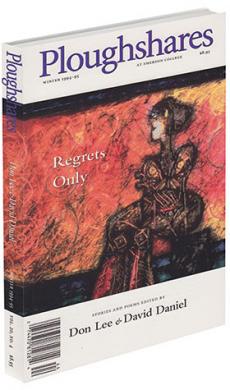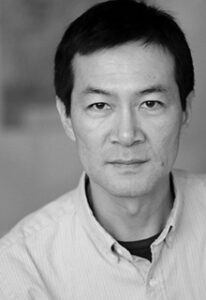rev. of Late Empire by David Wojahn
Late Empire
Poems by David Wojahn. Pittsburgh Poetry Series, $10.95 paper. Reviewed by Diann Blakely Shoaf.
“History has to live with what was here,” wrote Lowell in one of his offhand but authoritative pronouncements. In an age emerging from the New Critical hegemonic concept of literary and historical tradition that Lowell was schooled on, David Wojahn, in his fourth collection,
Late Empire, adds a necessary codicil: history must also live with what
is here.
Hence, a poem like the book’s title piece, which leaps from the eighteenth to the twentieth century then back again. The poem’s subjects include the launch of the world’s first hot air balloon near Versailles, the World War II bombing of Dresden, the stage antics of the post-punk Screaming Blue Messiahs in a London club, and an apocalyptic dream, in which “the terrible / incinerating light has come, the dead / / frozen black to the wheels of their cars.” These fugal, associative moves between past and present, between history and autobiography, and between canonical and popular culture are made with virtuosic assurance throughout
Late Empire. Some pieces, like “Human Form” and “Emanations,” which along with the title poem are written in triadic stanzas and a rangy, expertly varied pentameter, use the musical structure of statement and counterstatement in the space of forty to sixty self-contained lines. Other impressive moments in the book come in sonnet sequences, a form Wojahn has made more disjunctively capacious since his collection
Mystery Train’s “rock and roll” series. “White Lanterns,” a crown of sonnets detailing the death of Wojahn’s mother from cancer, and “Wartime Photos of My Father” comprise
Late Empire’s second and third sections, these sequences striking for their technical mastery, their relentless self-questioning, and, ultimately, for their tough-minded empathy.
Wojahn’s memories of childhood — beginning in the early 1960’s with bomb shelters and duck-and-cover drills in classrooms — broaden and wheel through
Late Empire like Yeats’s widening gyres, their spirals containing films, popular music, and accounts of recent demagogues like Idi Amin and Khomeini. Interlaced are chronicles from other times, such as those left by seventeenth-century Dutch sailors, Pavlov, mid-century American pornographers, Ryszard Kapusinski, and an ecclesiastical commission investigating an occurrence of the stigmata.
Like Yeats, Wojahn writes with the shadowy thrill of the eschatological in his pulse, but
Late Empire’s final poem, “Workmen Photographed Inside the Reactor,” hints that such a thrill is to be resisted. Imagining himself as one of the space-suited technicians charged with cleaning up Chernobyl, Wojahn writes: “One last breath, last glance at the trees, / Down the staircase to the pit. Each thought — / the pike before me, stabbing at the gloom.” If Yeats often cast himself as the Oracle of Thoor Ballylee, drunk on séances and embodying the world’s collapse in a slouching beast, and if Lowell’s dynastic tyrants in
History are uncomfortably similar to his nihilistic poet-heroes, gazing summits to rubble, Wojahn offers a less self-glorifying, if riskier, alternative. We are to let that summit gaze
us nearly to rubble, to stab at that gloom only after we have descended into its terrors: the writer of
Late Empire exists to be conquered by the world in which he lives, not to be a latter-day conquistador of its territories, literal or metaphoric. A danger, of course, exists always in such an enterprise. Not all countries recover from occupation, and not all voyagers into evil’s frozen heart emerge. But if Aspley Cherry-Garrand, who perished with Scott in Antarctica, is one of the genii of Wojahn’s
Late Empire, a collection which can truly be called major, another is Dante, who emerged from a place far worse than Chernobyl to see the hopeful gleam of stars.
Diann Blakely Shoaf is a frequent reviewer for the “Bookshelf.” Her collection of poems, Hurricane Walk,
was published by BOA Editions in 1992.


